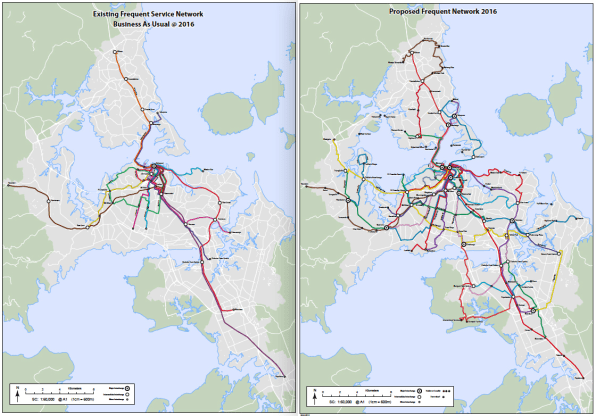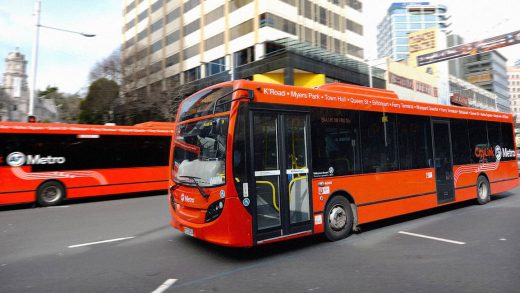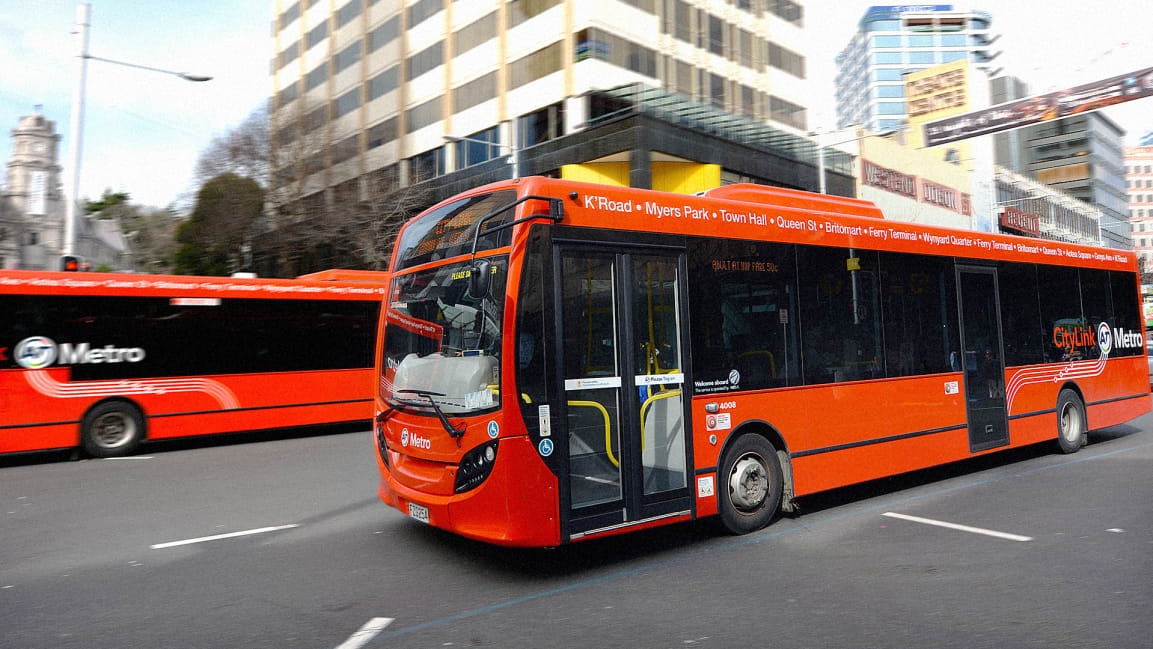Auckland, New Zealand, has figured out how to get more people to use transit
In 2012, the then mayor of Auckland, New Zealand, put a challenge to the city’s transportation department that seemed nothing short of impossible: He wanted to see annual transit ridership, which was then hovering at around 60 million rides, double in the next decade. No city had ever accomplished a transit ridership lift of this magnitude before. But while Auckland’s population was growing steadily–around 2% per year since 2000–transit ridership numbers were stagnating. The local government decided to attempt the impossible and change that.
According to the latest numbers, they’re succeeding. With three years and eight months left to hit their target of 120 million annual rides, the city is set to clock in at 100 million trips by the middle of this year. If trends hold, ridership will exceed the benchmark in 2022.

[Image: courtesy Human Transit]
To achieve this ridership lift, Auckland entirely overhauled its bus network. Working with Jarrett Walker, the transportation planning consultant behind Human Transit, the city took a look at its service in 2012 and decided that while it succeeded in transporting people from some of the furthest reaches of the city into the core, it did not offer nearly enough diversity in routes outside the city center. On his blog, Walker displays the two networks: the status quo in 2012, and the updates version he helped propose in 2016. It’s not hard to see how much more coverage the latter version offers.
The trick, Walker explains on the blog, is that with a more extensive bus network, people will have to transfer more. And in Auckland, they certainly did: According to Stuff, the number of trips requiring a transfer doubled to one in six, but even as the changes rolled out, ridership continued to increase. However, Walker points out that the need to transfer will not deter riders if it won’t cost them more to do so, and if transferring ultimately gets them to their destination faster than they would have arrived before. In Auckland, both of these things turned out to be true. He also emphasizes that operating a more extensive bus network, route-wise, didn’t cost more to run than the type of service Auckland previously offered, which contained fewer routes and more buses along each one.
The success of Auckland’s strategy to boost transit ridership numbers by improving its bus service should serve as an important reminder to cities that the oft-maligned bus is one of the cheapest and most nimble tools within their reach to radically reduce car dependency. We’ve seen similar successes in Seattle, which decided in 2014 to double down on its bus network to get people out of their cars. Through a voter-approved raise on both the sales tax and a car licensing fee, the city secured funding to purchase more buses, pay more drivers to run more trips in expanded hours, and added additional lines to cover more of the city. They also expanded bus priority service by designating certain heavily trafficked lanes downtown as bus-only. Since the changes rolled out, Seattle has been one of the only cities in the U.S. to actually see transit ridership numbers grow, as most cities’ systems are struggling to retain riders.
Especially as cities like New York, Portland, Minneapolis, Washington, D.C., and Seattle itself look to flashier options like new subways, light rails, and streetcars to draw more transit riders, it’s essential that a good bus network be part–if not all–of the equation. It’s inexpensive, flexible, and does not require infrastructure buildout, save for a splash of paint to indicate a bus-only lane. And when it works, as it has in Auckland, it really works.
(14)



